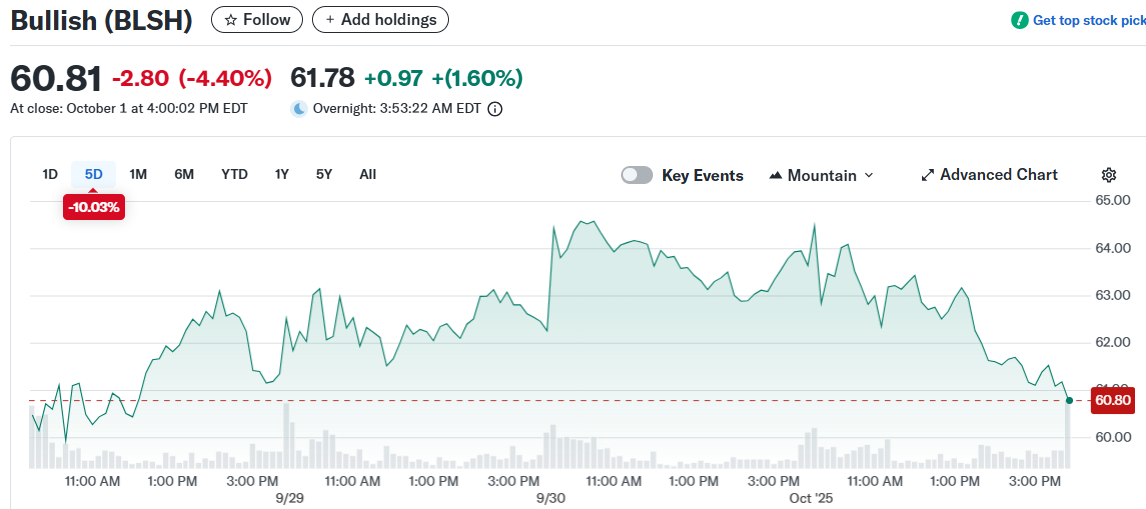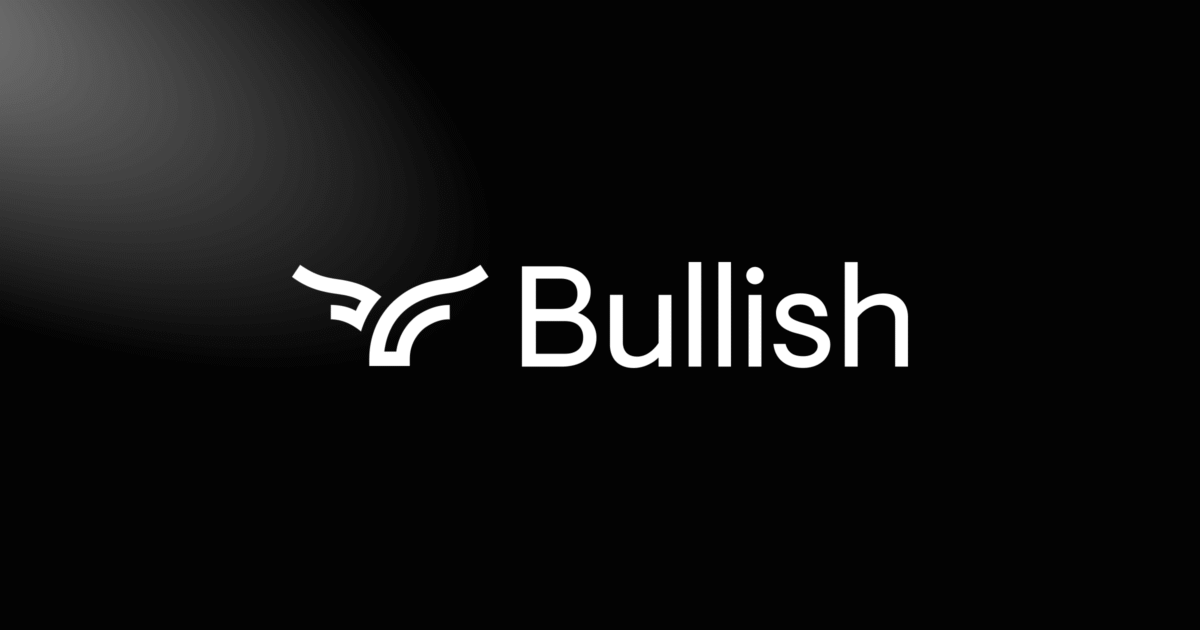TLDR
- Bullish received BitLicense and money transmission license from New York’s financial regulator, enabling operations across 20 US states including California, Florida, and New York
- The platform handled $1.5 trillion in trading volume internationally since 2021 and now offers 0% maker fees for institutions and 0% trading fees for advanced individual traders
- Bullish will launch Bitcoin options trading on October 8, with contracts margined and settled in USDC stablecoin
- The options product has secured 14 major trading partners including Galaxy Digital, Cumberland, and Wintermute for day-one support
- Despite expansion news, Bullish shares fell 4.4% to $60.80 but remain up over 60% from August IPO price of $37
Bullish has launched crypto trading services across 20 US states after receiving regulatory approval from the New York State Department of Financial Services last month. The institutionally-focused platform began spot trading with two clients on its first day: crypto infrastructure firm BitGo and crypto brokerage Nonco.
1/4 The wait is over. Bullish is now available in the United States. 🇺🇸
We are proud to offer institutions a new standard in digital asset trading.
Read more 👇 pic.twitter.com/KfFzoj7k6p
— Bullish (@Bullish) October 1, 2025
The approval includes both a BitLicense and money transmission license from New York regulators. A BitLicense is required to transmit, custody, or issue virtual currency in New York and is one of the most difficult licenses to obtain in the crypto industry.
States where Bullish is now available include California, Florida, Arizona, Washington DC, New York, Arkansas, Colorado, Delaware, Hawaii, Indiana, Michigan, Missouri, Montana, New Hampshire, New Mexico, Utah, Virginia, West Virginia, Wyoming, and Puerto Rico. The platform plans to expand to more states soon.
Bullish has handled around $1.5 trillion in trading volume internationally since launching in late 2021. The platform claims to be one of the 10 largest crypto exchanges by Bitcoin and Ether trading volume.
The exchange combines a central limit order book strategy with a deterministic automated market maker. This provides deep, stable liquidity and efficient trade execution according to Bullish president Chris Tyrer.
Bullish targets institutional clients including hedge funds, proprietary trading firms, market makers, fintechs, and neobanks. The platform offers 0% maker fees for institutional accounts and 0% trading fees for advanced individuals in approved US states.
Options Trading Launch
Bullish will launch crypto options trading on October 8. The platform will offer Bitcoin options margined and settled in USDC stablecoin, which has a market cap of $73.85 billion.
The options will be European-style with expiries ranging from three weeks to three months. The contract multiplier will be 1, meaning one contract represents one full Bitcoin. The exchange plans to list options tied to Ether and other assets in the future.
Bullish has secured 14 trading partners for day-one support of the options product. These include Abraxas Capital Management, Ampersan, B2C2, BlockTech, Cumberland, FalconX, Fig Markets, Flow Traders, Galaxy Digital, Monarq Asset Management, Pulsar, SignalPlus, Wintermute, and Qube Research & Technologies.
Unified Margin System
Bullish’s platform features a unified margin system that allows traders to access spot, perpetual futures, dated futures, and options through a single account. This setup provides risk offsets and portfolio collateralization for capital efficiency.
The global crypto options market is valued at over $50 billion in notional open interest. Competitor Deribit accounts for more than 80% of the activity in this market.
This year Bullish has executed over $2 billion in average daily volume. The platform ranks in the top ten exchanges by spot volume for Bitcoin and Ether.

Bullish shares fell 4.4% to $60.80 during Wednesday’s trading hours following the expansion announcement. However, shares remain up over 60% from the company’s $37 initial public offering price in mid-August, with a current market cap of $9 billion






